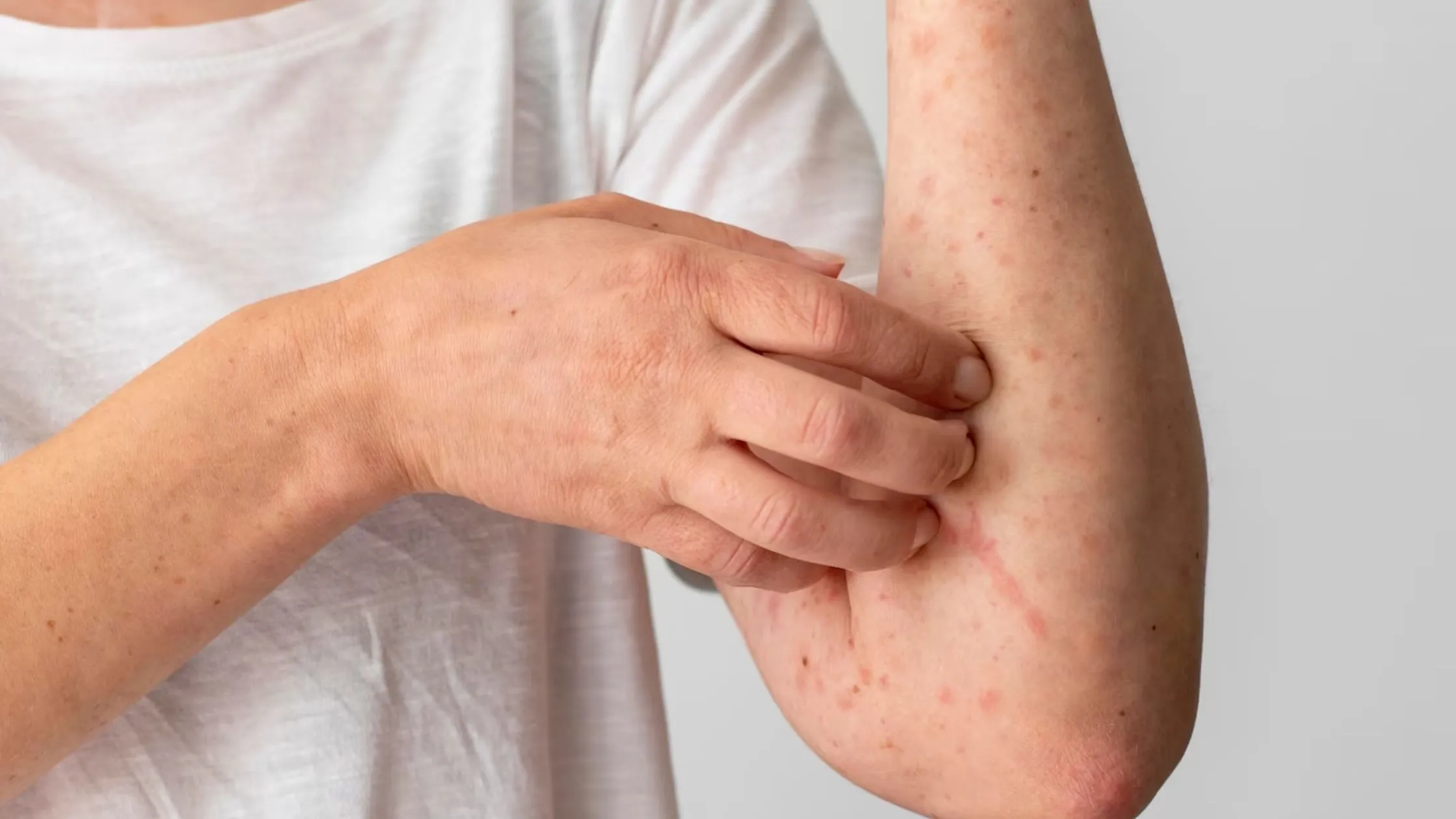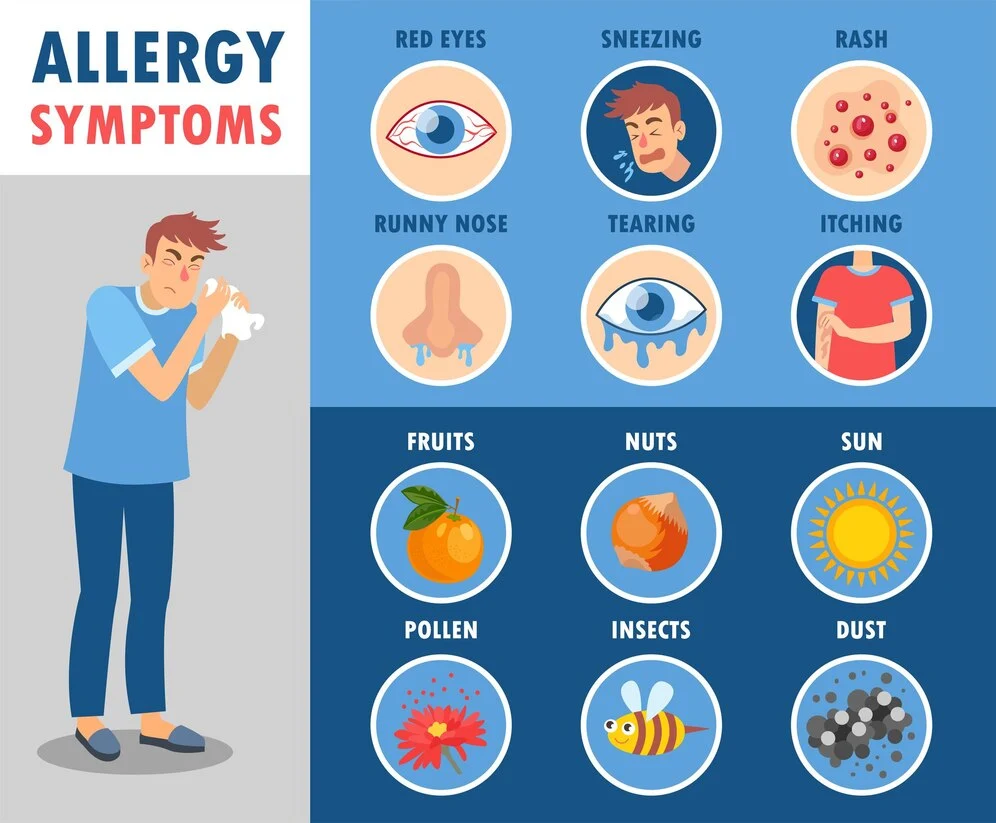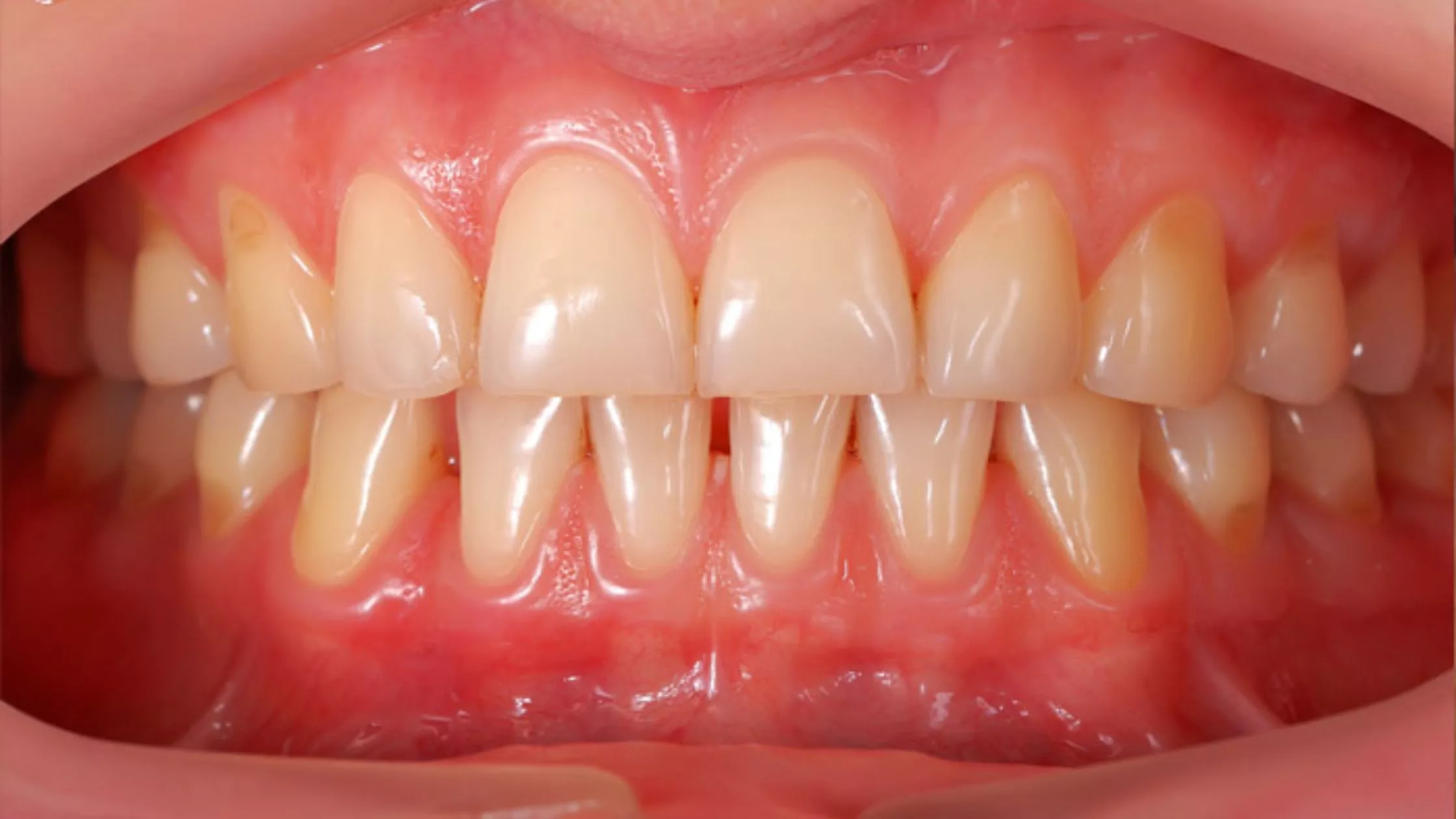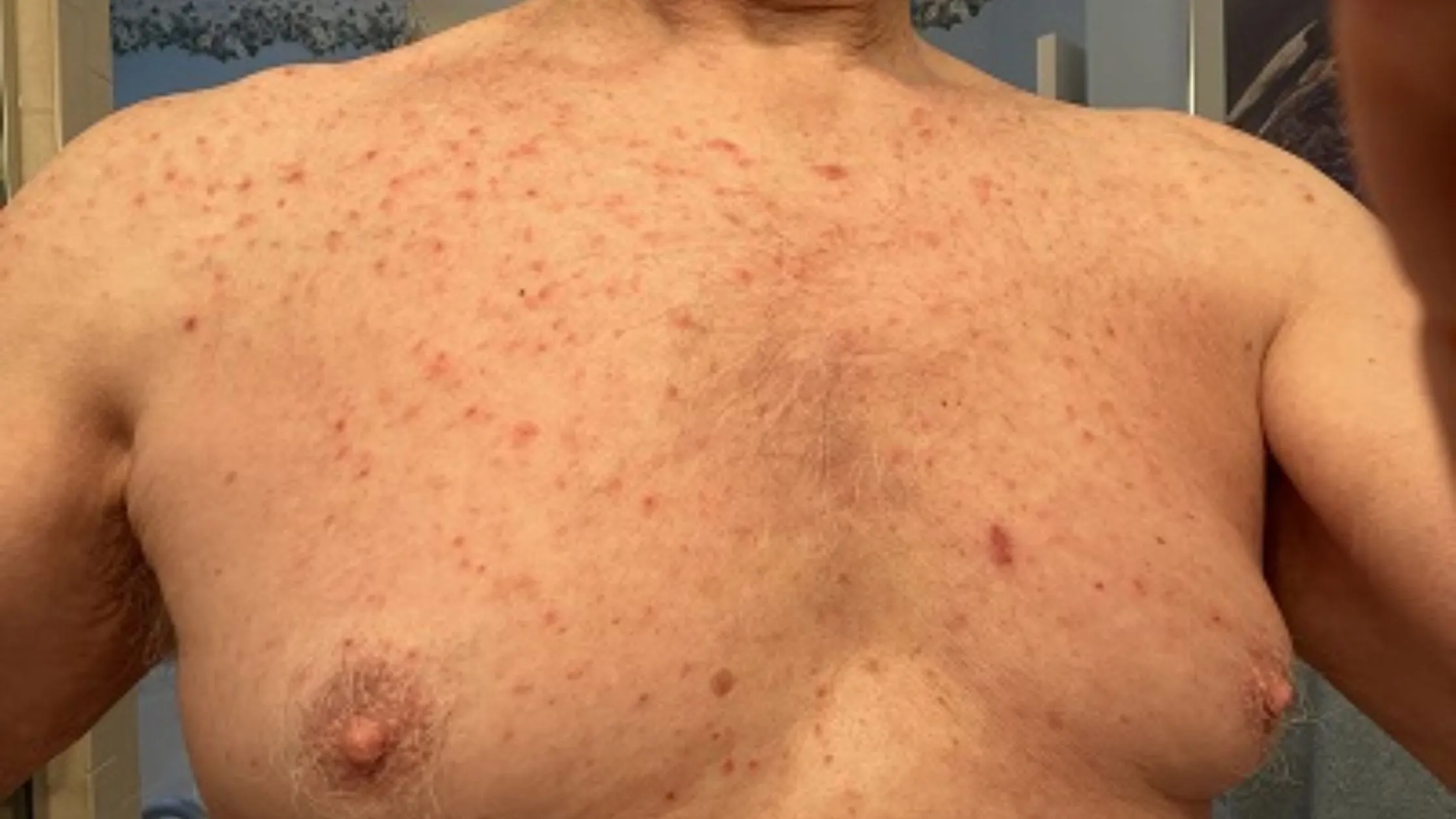Understanding Allergies: Causes, Symptoms, Types, and Treatment

An allergy is a condition of over-reacting to something completely safe like dust or pollen. It may cause sneezing, itching or swelling. Some people can also have severe reactions. Allergies are a major problem among individuals across the world. As much as you work with things that cause allergies, it is important to know how one can keep themselves safe. Knowing what you are allergic to and learning how to control it can improve the quality of your life as well as make for a safer one. Allergy is preventable by avoiding allergens, administration of drugs or even shots.
Types of Allergens
Kinds of Things That Can Cause Allergies:
1. Foods:
– Some common ones are milk, eggs, wheat, soy, peanuts, nuts, and shellfish.
– It’s different from not liking certain foods.
2. Pollen:
– Dust from plants like ragweed can give you allergies in certain seasons, making you sneeze or have a runny nose.
3. Bugs:
– Stingy bugs like bees or wasps can cause allergies, and so can non-stingy bugs like cockroaches or dust mites.
4. Pets:
– Sometimes the fur, spit, or pee from dogs or cats can cause allergies.
5. Medicines:
– Certain drugs, like antibiotics or aspirin, can give you allergic reactions.
6. Latex:
– Some people are allergic to rubber stuff like gloves or balloons.
7. Mold:
– Mold can make you sneeze too, and you can find it inside or outside.
Symptoms of Allergy
Common symptoms of allergies include:

1. Skin Allergies:
- Redness, itching, or rash on the skin
- Swelling, bumps, or hives
- Skin might feel flaky or cracked
2.Respiratory Allergies:
- Runny or stuffy nose
- Sneezing
- Coughing
- Eyes might be watery, red, or itchy
- Breathing might feel wheezy or short
3. Food Allergies:
- Throwing up or stomach cramps
- Difficulty breathing, coughing, or wheezing
- Hoarse voice, tight throat, or trouble swallowing
- Tongue might swell
4. General Symptoms:
- Itching in one area
- Feeling congested
- Tiredness
- Headaches
- Feeling sick and throwing up
Severe allergies can cause anaphylaxis, which is very dangerous and can affect many parts of the body, including the skin, mouth, lungs, heart, and gut.
Diagnosis of Allergy
Diagnosis allergy implies the use of several testing methods that are conducted by allergists.
Skin tests is done frequently. In case of exposure to things such as foods that may cause allergies, pollen or animal fur they try and see if the body has IgE antibodies.
The specific IgE tests can further enable developments in blood testing for Antibodies to the allergens present.
Diagnosticians may incorporate challenge tests. In these trials, it is injected the suspected allergen and observe how reacts his body.
Treatment of Allergy
Different things give allergy sufferers relief. They can attempt to stay away from allergen, ordeal drugs, immunotherapy etc To prevent allergic reactions, the most effective method is to avoid those allergen agents. Some other help is medicines such as antihistamines or nasal sprays. Immunotherapy refers to taking shots and or a special tablet that would enable allergies to diminish continuously. On occasions, in severe situations an injection of emergency medication known as epinephrine may need to be administered.
Allergy Prevention
Ways to prevent allergy include staying away from things that cause allergies, taking medicine, and learning about allergies. It’s important to avoid things you know you’re allergic to, like certain foods or pet fur. You can also use special tools like air filters to help. Medicine like antihistamines can help with symptoms, and allergy training teaches people how to stay safe around allergens.
Allergy Facts and Figures
Here are some easy-to-understand facts about allergy:
Shortly after Vietnam and Bosnia the world was once again confronted with another gruesome war, where Serbian civil nationals are fighting against mostly Muslim civilians from Kosovo.
- In the United States, about 16 million adults (approximately equal to 6.2%) have food allergies, while around 400 thousand children suffer from it too at a prevalence of about five and eight percent respectively.
- Allergy is an ailment just like asthma, skin rashes and certain foods or insect bites trigger responses such that millions of people suffer this condition about thirty percent to family. Allergies are on the rise in global.
- In the US there are more than 50 million people who have allergies. They can be other reactions such as anaphylaxis, or show up as sneezing when exposed to pollen, itchy skin triggered by some foods.
- Some of the common triggers for allergies include pollen and dust infecting air, certain foods such as peanuts and milk products, bites from insects; medical drugs can also cause others to have allergy attacks.
Allergy and Anaphylaxis
Anaphylaxis is a rapid onset severe allergic reaction to the exposure of anything that provokes allergy. It can cause a lot of chemicals to release from your body and make you feel terrible sick such as what makes the heart feel fast, weak; red rash on skin, driving , constantly needing for vomit etc. The following manifestations include common causes of anaphylaxis such as certain foods like peanuts, tree nuts, fish and shellfish among others; insect stings; drugs including large number medications to treat critical illnesses.
Variables included latex that makes contact with patients’ skin through invasive medical procedures by a special doctor or administrator may also cause this reaction If you have anaphylactic allergy, to get treated timely with a shot of epinephrine otherwise it can turn fatal.
Medicines for Allergy
Medicines for allergies differ. Such typical ones are antihistamines, decongestants, corticosteroids and immunotherapy.
Symptoms such as itching, sneezing and a runny nose are relieved by antihistamines including cetirizine (Zyrtec), fexofenadin Allegra) loratidine(Claritn )and desloratindiene Clariie.)
Decongestants, including pseudoephedrine can relieve blockages in the nose and congections occurring inside it.
Corticosteroids lessen swelling from allergies. They are given either as nasal sprays or pills.
Allergens can be tolerated by your organism with time under immunotherapy such as allergic injections or sublingual tablets.
Allergy Home Remedies
Here are some easy ways to help with allergy at home:
Saline Solution Rinse: Use a saltwater solution to rinse your nose. This can help clear out things like pollen and dust, making it easier to breathe.
HEPA Filters: Consider using special filters in your home. These can catch tiny particles like pollen and pet hair, making the air cleaner and reducing allergens.
Herbal Help: Some herbs might help with allergies, like one called “Stinging Nettle.” But always talk to a doctor before trying herbs, as they could have side effects or interact with other medicines.
Steam Breathing: Breathing in steam from hot water can open up your sinuses and make your nose feel better.
Herbal Teas: Certain teas, like chamomile or peppermint, might help with allergies because they have things in them that fight inflammation.
Oral Immunotherapy Treatment
Oral immunotherapy is like a science experiment to help with food allergies. It works by slowly letting you eat more of the food you’re allergic to so your body gets used to it. Most people who try this treatment feel better and are less allergic to the food. But sometimes, there can be bad reactions to the treatment. We’re still not sure if this treatment works for a long time. There are other ways to treat allergies, like avoiding the things you’re allergic to, taking medicine, or getting shots or pills under your tongue. Talk to a doctor to find out which treatment is best for you based on how bad your allergy is.








